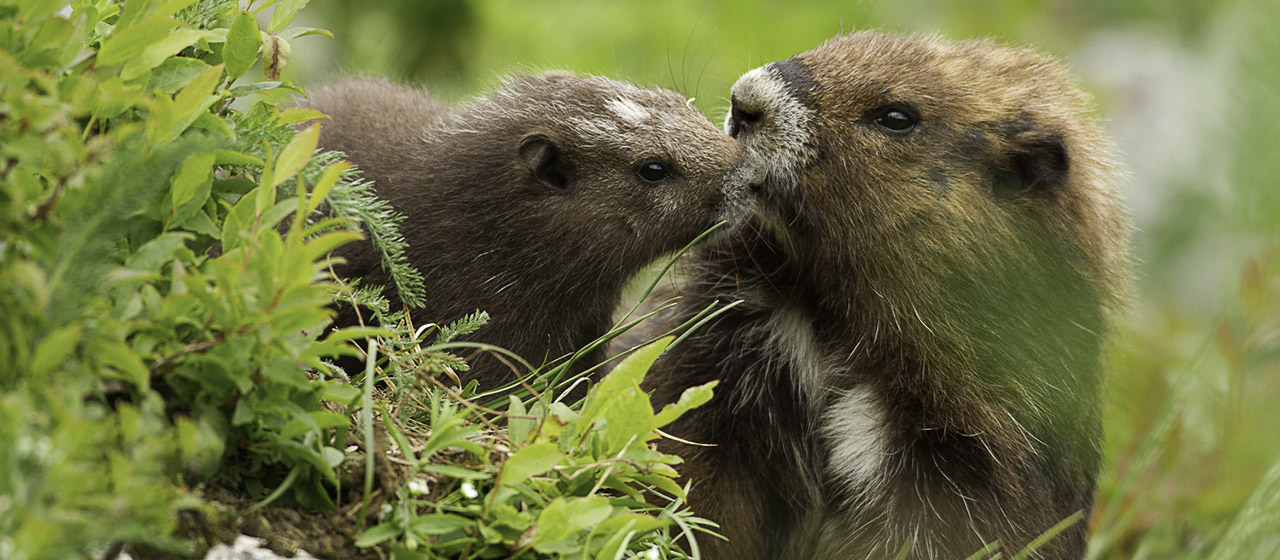
- Inspiring People -
- 8mins -
- 702 views
Great news! Researchers discover secret colony of marmots – Canada’s most endangered mammal
Conservationists are celebrating after the discovery of a group of Vancouver Island marmots that signals a great step forward in the recovery of the highly endangered species.
Researchers discover secret colony of endangered marmots on Vancouver Island
Researchers and conservationists in Canada are celebrating after the discovery of a group of Vancouver Island marmots that indicates a positive step forward in the recovery of these adorable yet highly endangered mammals. Adam Taylor, executive director of the Vancouver Island Marmot Recovery Foundation, told CBC the discovery of the colony complete with adults, yearlings and pups in Strathcona Park was "a thrilling sign.” "We’ve been waiting years to see this," Taylor said.
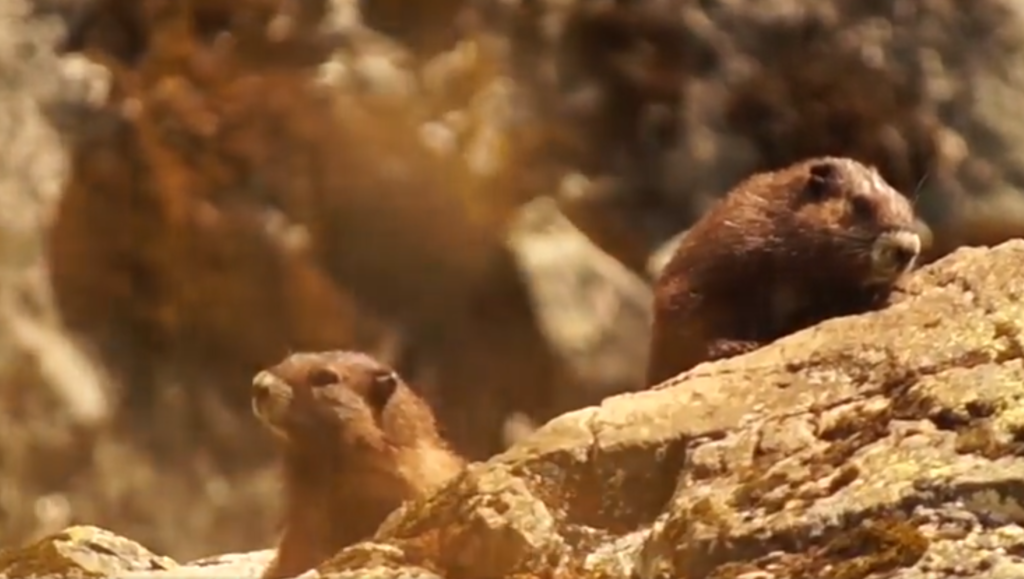
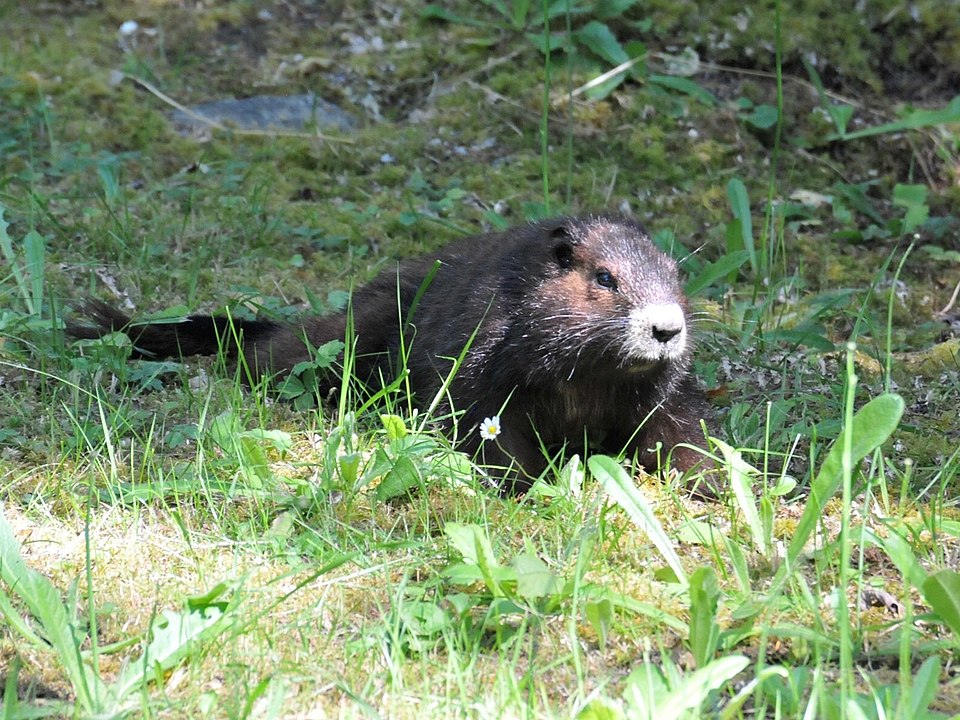
A good start on the road for recovery for marmots
The Vancouver Island marmot is endemic to the island, and only lives in the high mountains in open alpine habitat. Their populations have plummeted in past decades due to habitat loss, reaching a low of just 27 individuals in 2003.
Thanks to captive breeding programs in the Toronto Zoo, Calgary Zoo and Mount Washington, there are now around 200 individuals in the wild population. Taylor says he believes this colony — which numbers 10 to 12 individuals — is descended from marmots reintroduced to Marble Meadows, about a kilometre away.
Marmots typically disperse away from their natal colonies, but Strathcona Park has proved tough terrain for the species. They must build massive metres-deep burrows to hibernate in the winter and find enough food to build up the fat layers they need for hibernation. The marmots must also evade hungry predators.
"Our expectations have been low, to be blunt. It’s been a long time of trying to reintroduce these marmots, trying to reestablish colonies that we knew about," Taylor told CBC.
To see the marmots disperse on their own, pick their own habitat, and managed to successfully establish themselves — and the next generation — is incredible, he said. While there have been three new colonies discovered this year, Taylor said the species is still critically endangered.
"We’re still talking about just over 200 individuals in the wild," he said.
The summer has been difficult. Like many other species, the marmot has been hit by the drought, which has curtailed their much needed vegetation for the winter months. August and September are also typically dangerous months for predator activity. Taylor hopes that the marmots continue their successful dispersal, moving from one colony to the next, reproducing successfully and otherwise thriving.
"This isn’t the end of the road for recovery for this species. It’s a good step, though," he said.
Source: CBC.ca
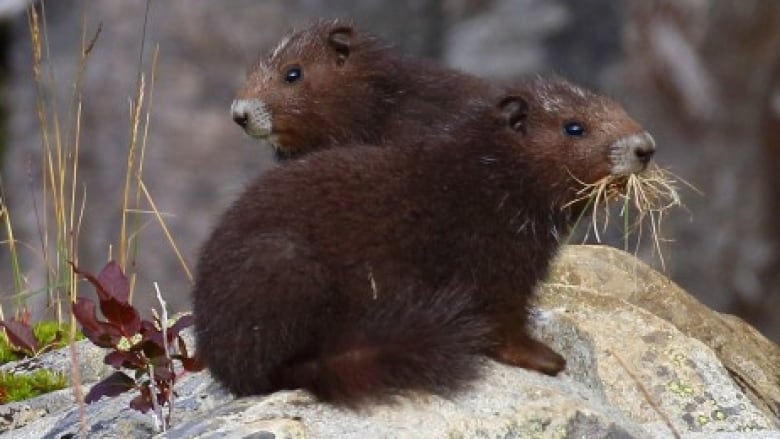
‘Hunch’ led to discovery of new endangered marmot colony
In mid-August Kevin Gourlay of the Vancouver Island Marmot Recovery Foundation was spending five days in the mountains of Strathcona Park doing an inventory of known marmot colonies when he discovered a new one.
“I found a new marmot colony, three or four adults all untagged, there was a yearling further up the hill and there are seven or eight pups,” he can be seen saying on video while still on top of the mountain west of Buttle Lake.
He and a partner were in Marble Meadows when, on a hunch, he went into a different gully and heard a tell-tale marmot whistle.
“So I kind of got into the base of this gully and looked up and it was quite comical,” Gourlay told CHEK News. “There was a whole bunch of little heads poking out of holes in the ground and it was hard to tell exactly how many marmots were there. There was another warning whistle and they went scattering all over the place.”
Another colony was discovered in Strathcona Park this year as well as one in the Nanaimo Lakes area.
Strathcona Park has proven to be a difficult place to reintroduce marmots because they have to dig massive burrows deep into mountainsides to hibernate in the winter and find enough food to build up the fat layers they need for hibernation. The marmots also have to evade hungry predators.
“It’s still a very fragile population so we’re talking about 200 to 250 animals and that’s rarer than Siberian Tigers, rarer than Mountain Gorillas, this is still one of the rarest mammals on the planet,” added Taylor.
Gourlay only joined the Foundation in May and has already made a discovery that could lead to a more promising future for Vancouver Island Marmots. You can learn more about the marmots and donate to the Foundation here.
Source: ChekNews.ca
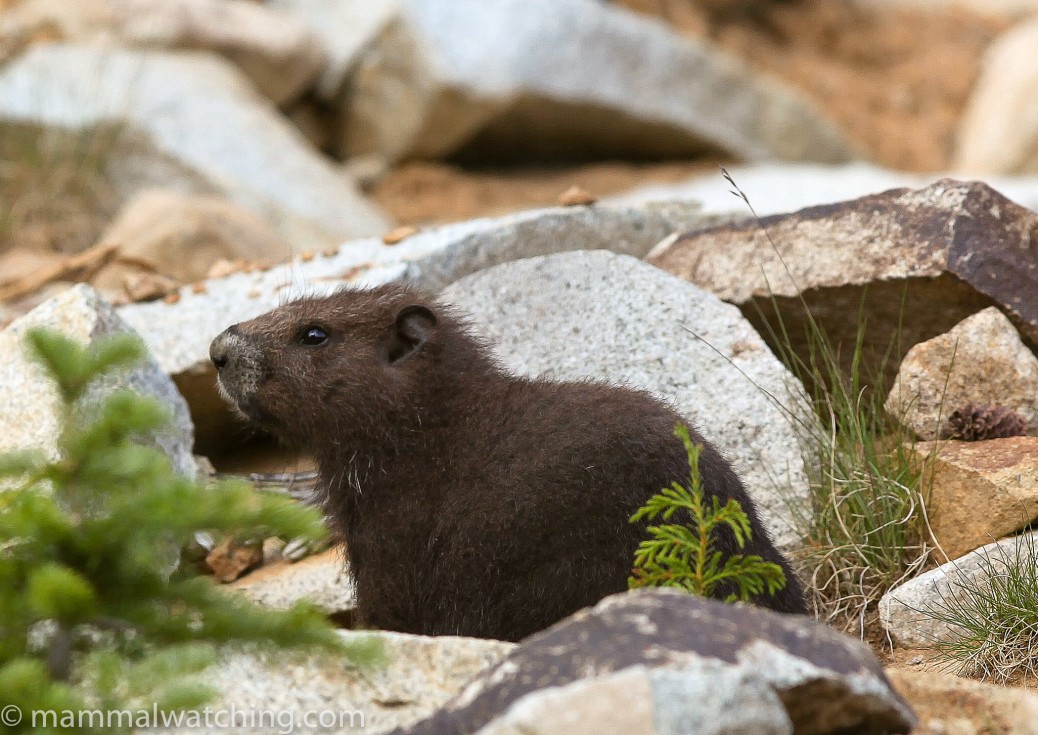
Animal Profile of the “whistle pig”
The Vancouver Island marmot (Marmota vancouverensis) is one of the largest members of the squirrel family (about the size of a large house cat). Other members of the Sciuridae family include chipmunks, squirrels and woodchucks.
- Characteristics
Vancouver Island marmots are easy to recognise by their rich chocolate brown fur with contrasting white patches on their nose, chin, forehead and chest.
Newborns have a uniformed brownish black coat that fades in summer to a rusty brown at hibernation time. These different colour stages of coat development make it easy to identify pups from yearlings and older adults in the field.
Marmots have large beaver-like teeth, sharp claws and powerful shoulder and leg muscles for digging. An adult Vancouver Island marmot typically measures 65-70 centimeters from nose to tip of its bushy tail. An average female weighs 4.5-5.5 kilos and males can weigh as much as 7.5 kilos. Both males and females lose up to 1/3 of their body mass in hibernation making seasonal weight variation from spring emergence to the onset of hibernation significant. They can turn from sleek to plump in a matter of a few months.
- Behaviour
Vancouver Island marmots live in family groups called colonies and hibernate below ground from mid-September until late
April or early May. Hibernation permits the marmots to survive the long alpine winters when food is not available.
Radio-telemetry suggests that marmots hibernate as family groups, and often re-use hibernacula in subsequent years. During hibernation the marmot’s heartbeat slows to 3 0r 4 beats per minute compared to an average range of 110-200 beats per minute when they are active. When they emerge from hibernation in the spring they often tunnel through several meters of snow.
During the active summer period, marmots spend a lot of their time lounging on rocks and watching for predators. Only a few hours each day are spent looking for food, eating and interacting with other marmots. Marmots are more likely to be seen in early morning or late afternoon than during the heat of the day.
Nose – touching (“greeting”) and play fighting (“boxing”) are common behaviours and very entertaining to watch. When alarmed, marmots give piercingly loud whistles, which earned them the nickname “Whistle Pig”. Vancouver Island marmots have five distinct whistles or trills used for different purposes. That’s more than any other marmot species.
Source: Marmots.org
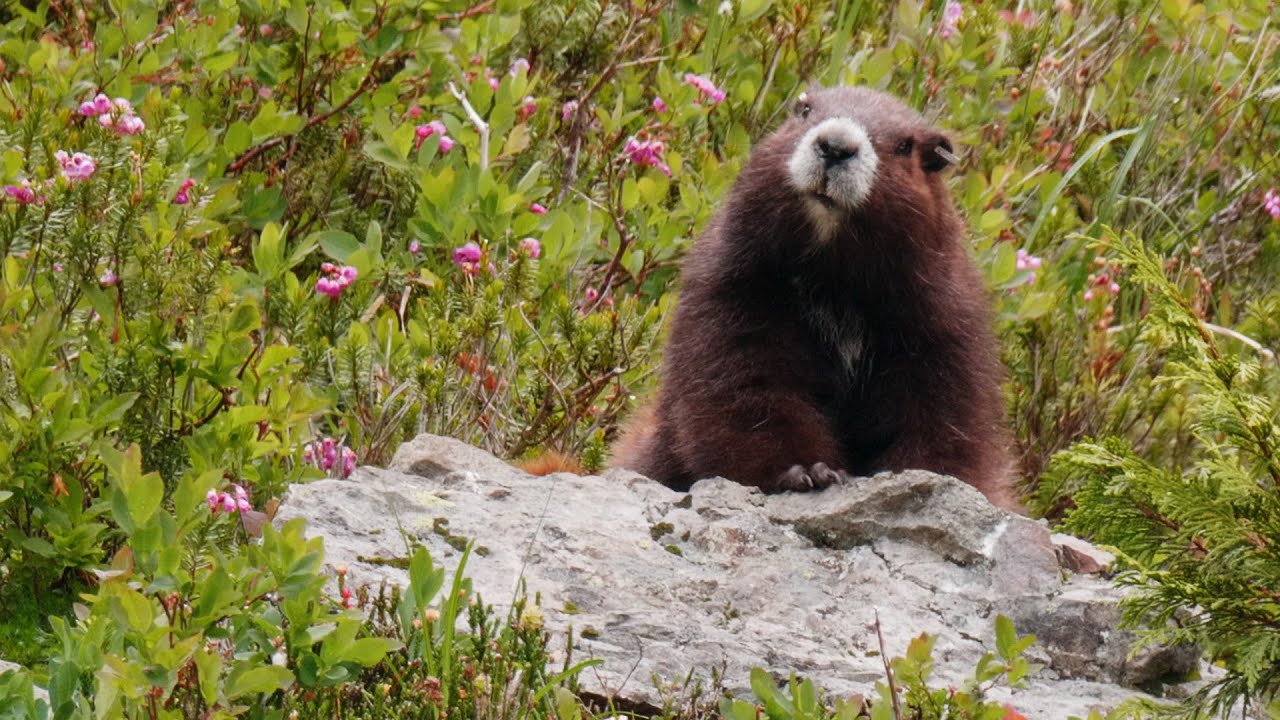
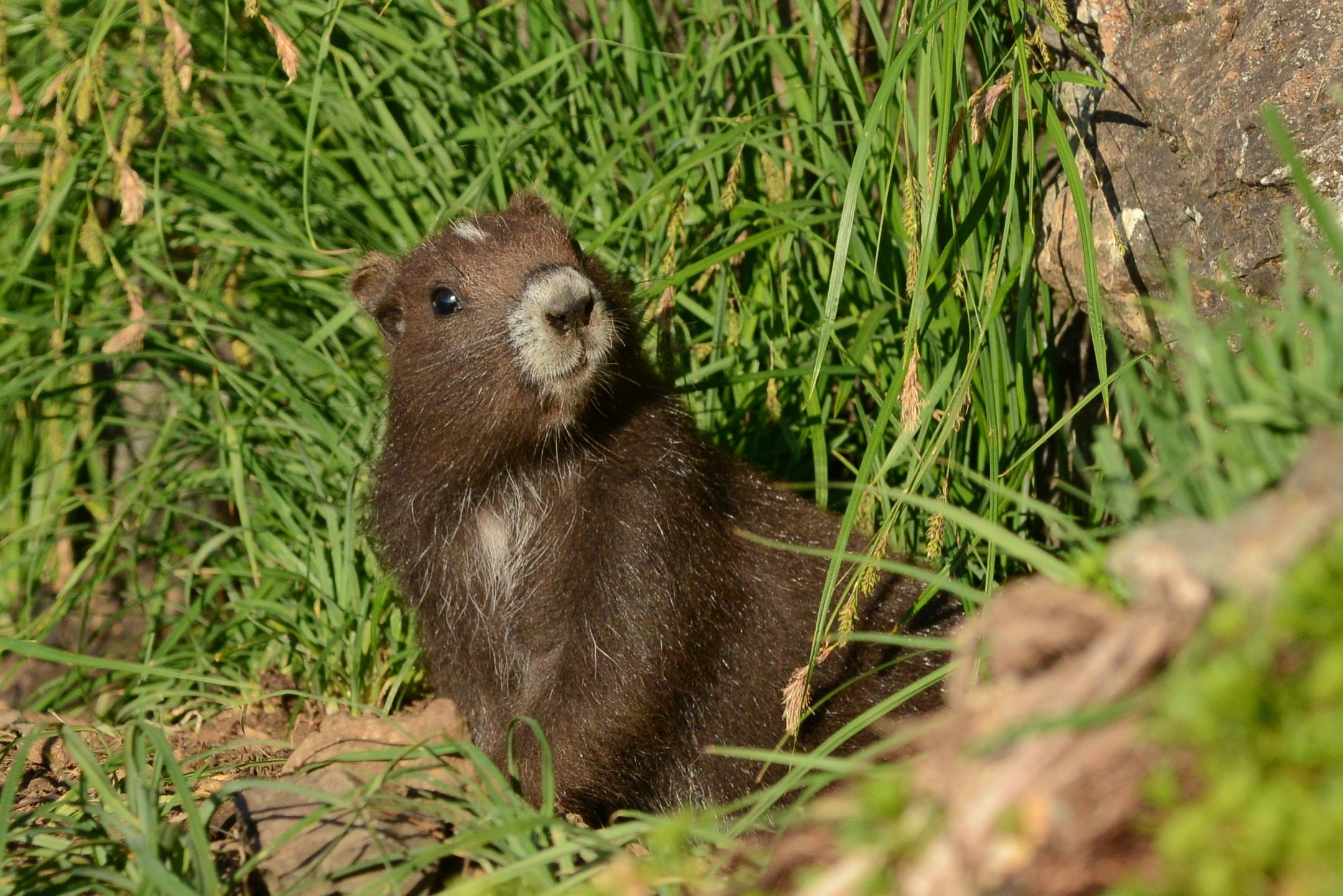
Vancouver Island marmot colonies are relatively small
Reproduction
Mating occurs below ground in May, shortly after waking from hibernation. Pups, usually 3 or 4 in a litter, are not seen above ground until late June or July.
Females generally begin breeding at 3-4 years of age in the wild and generally produce a litter of pups every other year. They can live over 10 years in the wild (10-15 years in captivity), so a productive female might contribute 12-15 pups during her lifetime.
Both females and males are attentive parents, carefully guarding the nest burrow and otherwise standing guard: pups remain near their natal burrow for their first year and hibernate with their mother in late September. Yearlings generally expand their movements farther from home but usually return to hibernate with their mom a second time. Males will occasionally father pups with two or more females in a given year.
Habitat and Diet
Vancouver Island marmots live neither in the forest nor on the rocky mountaintops. They live in small patches of south and west-facing sub-alpine and alpine meadows (usually above 1000 meters), where occasional winter avalanches and snow creep prevent trees from taking root. These meadows are the first to become clear of snow and produce the early grasses and sedges the marmots rely upon when they emerge from hibernation.
There they find the forage they need, deep soil for digging (hibernation burrows need to be deep enough to reach below the frost line) and large boulders to provide convenient lookout spots to watch for predators. Boulders also help marmots regulate their internal body temperature; you will often see them stretched out on them in the early mornings and evenings, and are a predictable and necessary feature of marmot habitat.
Underground burrows provide shelter from the elements and protection from predators. Typically 30-45 cms across, burrows range in size and purpose. Small, simple burrows may be used for a quick escape from a predator and larger more complex burrows are used for hibernation and birthing and may have numerous passages and exits. One excavated hibernation burrow measured five meters in length with the sleeping chamber located one meter underground.
Hibernacula can be identified either by the grass and mud “plugs” found at tunnel entrances in late autumn, or by emergence tunnels through the snowpack in May or early June. In general, Vancouver Island marmots appear to select hibernacula that are covered during winter by deep snow.
Vancouver Island marmots are herbivores and are known to eat over 40 different species of grasses, herbs and wildflowers. Spring feasts begin with grasses, sedges and phlox and graduate to lupines and other forbs later in the season.
Dispersal
Vancouver Island marmot colonies are relatively small and can be made up largely of family members, contributing to a lack of mate selection. To avoid the effects constant inbreeding would have on the species, marmots increase their selection by leaving their natal colony to find a mate at a colony nearby or attract a mate dispersing from another colony.
This movement of marmots between colonies is called dispersal. Both male and female marmots disperse, usually as two year olds, although males are more common dispersers. One tracked male dispersed 27 kilometers looking for a mate! A more usual dispersal range is 5-20 kilometers.
Source: Marmots.org
